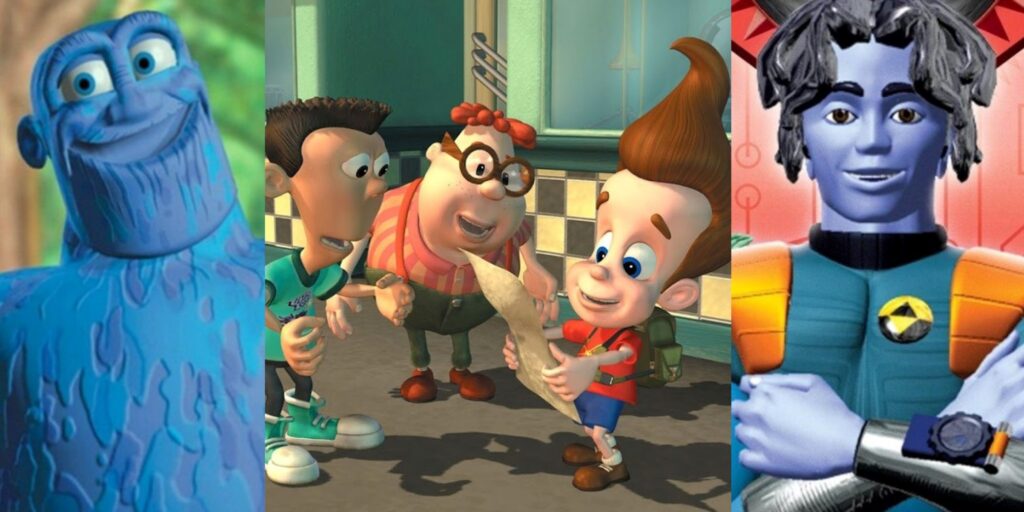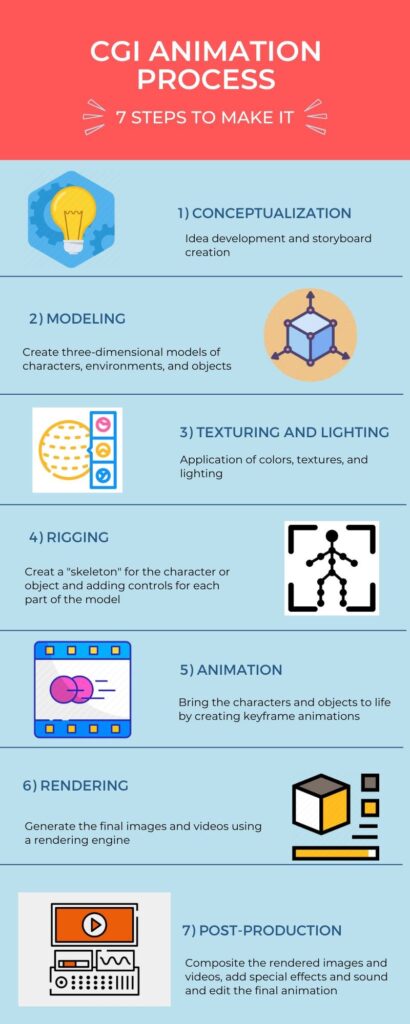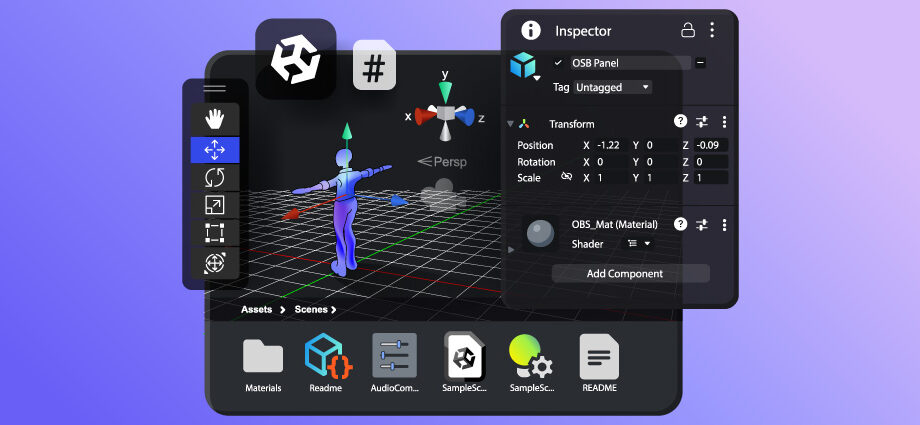CGI (computer-generated imagery) revolutionized the animation film industry in the 1990s, but its history began decades before Toy Story.

Source: Game Rant
This guide will define CGI animation and explain how it operates. We will demonstrate how to build your own computer-generated animations, as well as relive some of the most memorable moments in the history of CGI.
CGI animation: What it is
CGI (computer-generated imagery) is a subset of visual effects (VFX). It refers to visuals, sceneries, and effects generated by computer software. CGI can be static or dynamic, 2D or 3D, and subtle or evident in its use.
CGI is sometimes used to inject animated aspects into live-action video; see the T-Rex chasing Jeff Goldblum in Jurassic Park.
Similarly, technology might be used to construct extravagant scenarios that would be too costly or complicated to produce in reality (such as the epic battles in Game of Thrones).
It can also be used to make performers look decades younger, as shown in The Irishman on Netflix, or to put them into fantasy backgrounds using a green screen.
Inside the World of How CGI Animation Works
CGI may be utilized to build wholly new worlds in animated films, as shown in Pixar’s Toy Story and Disney’s Frozen.
CGI eliminates the need for intricate, costly, and time-consuming manual animation and provides artists with a great deal of freedom to work beyond the constraints of 2D.
CGI animation is only one of several animation techniques, including:
- 2D and vector-based animation.
- Motion graphics
- Stop motion
- Cel (celluloid) animation
CGI animation methods are found in other fields besides television and movies, including medicine, science, engineering, real estate, architecture, astrology, art, and advertising.
Also, many video animation companies use computer-generated imagery (CGI) animation in their productions.
This technique allows animators to create highly detailed and realistic animations, and it is widely used in the film and television industry, as well as in the production of commercials, video games, and other forms of digital media.
Exploring the Key Differences between CGI and Animation
Before the mid-1990s, the majority of animated films were created using traditional cel drawings. Classic Disney titles such as The Jungle Book required painstaking hand-drawn artwork.
Stop-motion films, such as Jason and the Argonauts, were similarly laborious, requiring minute clay model movements. But why is CGI different?
| Traditional Animation | CGI Animation |
| Traditional animation involves creating a series of distinct illustrations or movements to create a smooth motion. In the case of cel animation, this can require up to 24 separate drawings per second of footage. | One of the most notable distinctions between CGI and animation is the utilization of computer programs. For instance, 3D animators establish virtual skeletons (rigs) that possess specific movements. The computer program manages the movements between these key movements, saving time, energy, and resources. |
| The process of combining live action and animation has been used for a long time, but it is a difficult and time-consuming process. In the Disney movie Who Framed Roger Rabbit, the production filmed live scenes first and then had animators manually add cel animations later. The visual effects studio Industrial Light and Magic used a large amount of composite film, over 10,000 feet, for the film’s effects. | The use of computer software enables the seamless integration of CGI animation with live-action elements. This can include incorporating imaginary creatures such as dragons or monsters into a real-world shot of a city. Additionally, it allows for the inclusion of actual physical models made of materials such as clay into computer-generated scenes. |
| By contrast, traditional animations require more resources and budget. A traditional animated video price can go up to 200,000 USD. The Lion King used 800 animators to Toy Story’s 110. It also cost $45 million to create. | CGI animations are less costly and resource-intensive. This is part of the reason for the technique’s popularity. Toy Story employed 110 animators and cost $30 million to develop, which is far less than The Lion King, and its contemporaries. |
From Pixels to Reality: The Fascinating History of CGI in Animation
The use of computer-generated imagery (CGI) in animation can be traced back to the 1958 film Vertigo, in which animator John Whitney and graphic designer Saul Bass used a rotating component from a Second World War anti-aircraft computer to create a continuously rotating spiral pattern.
In 1972, computer science students Edwin Catmull and Fred Parke created a short film called A Computer-Generated Hand, which used computer animation to create a realistic moving hand for the first time.
Catmull later co-founded Pixar and created the short film Luxo Jr., which depicted a heart-warming scene between two lamps and was the first CGI film to be nominated for an Oscar.
This ultimately led to the creation of the first fully animated CGI feature film, Toy Story, which marked a new era in CGI-animated feature films.
Other Relevant Readings:
Examples of CGI Animation That Raise the Bar
Now that we know a few things about the history of CGI animation, let’s take a look at some of the greatest examples of it:
Tin Toy (1988)
This short film by John Lasseter created a great deal of philosophical and visual framework for Toy Story. Tinny, a one-man band toy, tries to escape Billy, his newborn tormentor, in the film.
The film’s animation is not as lifelike or fluid as that of later films; Pixar’s proprietary PhotoRealistic RenderMan software has not yet caught up to the animators’ aspirations.
Nevertheless, the short was sufficient to pique Disney’s interest; the company subsequently decided to finance Toy Story.
Toy Story (1995)
Toy Story eventually cemented Pixar as the leading force in CGI animations for decades to come. Woody and Buzz Lightyear, the film’s two main characters, became legends due to the film’s innovation and entertainment value.
A remarkable crossover from the once-niche field of CGI animation, it is regarded as one of the finest films ever made.
Antz (1998)
This was the time when CGI animation firms drew their battle lines. In 1998, Dreamworks interfered with the premiere of Pixar’s second feature film, A Bug’s Life, by releasing Antz, an insect-themed CGI cartoon. CGI was no longer perceived as a unique idea, but rather as a new norm for animation production.
The Lion King (2019)
Similar to the 2016 version of The Jungle Book, The Lion King created a completely accurate African savannah using CGI. It was a contentious decision among fans of Disney’s hand-drawn masterpiece from 1994, but the results are bewitching.
Every frame of this recreation, including watering holes, grasslands, and the characters Simba, Timon, and Pumbaa, was created digitally but seemed completely authentic. Since A Computer-Generated Hand, CGI animation had gone a long way.
Insights into How to Make a CGI Animation
Creating professional CGI animations typically involves a team of specialized artists, including those who focus on visual effects (VFX), pre-visualization, lighting, animation, rotoscoping, and compositing.
These roles are essential in bringing the animation to life and ensuring that it meets the desired level of quality. Each team member specializes in a different area, and they work together to create the final animation.
CGI animation is created by using computer software to produce animated images and videos. The process typically involves the following steps:

Conceptualization: This is the first step in creating a CGI animation, where you develop the idea for the animation and create a storyboard or concept art to visualize it. This step is crucial for understanding the overall look and feel of the animation, and for communicating the concept to the rest of the team.
Modeling: In this step, you create three-dimensional models of characters, environments, and objects using software like Maya or Blender. Modeling is a time-consuming process that requires a good understanding of 3D geometry and the ability to create accurate and detailed models.
Texturing and Lighting: Once the models are created, you apply colors, textures, and lighting to them to make them look more realistic. This step is essential for creating a believable and immersive animation. You will use software like Photoshop and Substance Painter to create textures and software like Arnold or V-Ray to create lighting.
Rigging: This step is where you set up the controls that allow animators to move the characters and objects in the animation. This process is called rigging, and it involves creating a “skeleton” for the character or object and then adding controls for each part of the model.
Animation: This is the step where you bring the characters and objects to life by creating keyframe animations. This is where you can make the models move, talk, and interact with each other.
Animators use specialized software such as Maya or Blender to create animations, and they need to understand animation principles and timing well.
Rendering: In this step, you generate the final images and videos using a rendering engine like Arnold or V-Ray. Rendering can take a long time, depending on the complexity of the animation and the number of frames that need to be rendered.
Post-Production: Once the animation is rendered, you move on to the post-production stage, where you composite the rendered images and videos, add special effects and sound, and edit the final animation. This step is where you bring all the elements together and put the final polish on the animation.
It’s important to keep in mind that these steps aren’t necessarily linear, and you may find yourself going back and forth between them as you work on your animation.
Additionally, depending on the size of the project, you may have multiple people working on different aspects of the animation at the same time.
However, this process can vary. Every film or animation outsourcing company follow different steps to create CGI animation but the end goal of everyone is same.
Revolutionizing Animation: The Future of CGI
In the future, we can expect CGI animation to continue to advance and improve, allowing for even more realistic and believable animations. Some of the trends and advancements in CGI animation that we may see in the future include:
Increased realism: With advancements in technology, we can expect to see animations that are increasingly realistic and photo-realistic. This will allow for more immersive and believable animations in film, television, and other media.
Virtual Reality and Augmented Reality: As virtual and augmented reality technologies continue to improve, we can expect to see more animations being created specifically for these platforms, allowing for even more immersive and interactive experiences.
Machine Learning and AI: The use of machine learning and artificial intelligence in animation will continue to grow, allowing for more efficient and effective animation processes.
This will help to automate some of the more time-consuming tasks and will also allow for more realistic and lifelike animations.
Motion Capture: Motion capture technology will become more advanced, allowing for more realistic and nuanced animations of human and animal characters. This will be particularly useful in the gaming and film industries.
Use of Volumetric Capture: Volumetric capture is a technique that allows to capture the actor’s performance in 3D, creating a highly realistic digital version of the actor.
This technology will be used more and more in animation and visual effects, creating more realistic characters and allowing for more flexibility in the animation process.
More Interactive and Personalized Experiences: With advancements in technology, we can expect to see more interactive and personalized experiences in animation, such as interactive films and personalized animated content.
It’s worth noting that technology is always evolving, so it’s hard to predict exactly what the future holds for CGI animation, but these are some of the advancements that we might see in the future.
CGI Animation – In a Nutshell
In conclusion, CGI animation is an incredibly powerful tool in the film and entertainment industry, and it continues to evolve and improve over time.
From the early days of “A Computer-Generated Hand” in 1972 to the latest blockbusters, CGI animation has played a vital role in bringing stories and characters to life on the big screen.
The process of CGI animation is a complex one that requires a combination of technical skills and creativity.
From conceptualization to post-production, the process involves several steps, including modeling, texturing, lighting, rigging, animation, and rendering.
As we’ve seen, CGI animation is not limited to movies but is also used in various other industries like gaming, advertising, and even in virtual reality. It’s a versatile tool that can be used to create visually stunning and impactful content.
We hope this blog has given you a better understanding of what CGI animation is, how it works, and some of the famous examples of its use.
We encourage you to consider incorporating CGI animation into your brand’s marketing strategy, as it can help you stand out in a crowded market and create a memorable and engaging experience for your audience.
There are many video animation agencies who can give you a hand of help in this if you’re looking for some.
You can also contact us today to learn more about how we can help you with your CGI animation needs.
CGI Animation – FAQs
- Is 3D animation CGI?
CGI, or computer-generated imagery, is a broad term that encompasses a variety of techniques and applications, including 3D animation, visual effects, and 2D animation techniques.
While 3D animation specifically deals with the creation of 3D models and their animation, CGI is not limited to this and also includes other techniques such as compositing, motion graphics, and visual effects.
- How much does CGI cost?
As of 2018, the average cost of producing CGI, 3D animation, and other visual effects for a film was $33.7 million. However, for individuals who want to create their own animation projects, the cost can be significantly lower.
The main expenses for amateur CGI artists would be the cost of software subscriptions and computer hardware. Some software such as Adobe Animate and After Effects can be used for free on a trial basis.
- How do I become a CGI animator?
It is possible to learn CGI animation from home, but to become a professional in the field, further training and education may be required. While a bachelor’s degree in computer graphics, computer science, or a related field such as art, design, or film can be beneficial, it’s not a must-have.
However, regardless of the education route you take, having a strong portfolio of work and experience is key to impressing animation or film studios and getting hired in the industry.
- What was the first CGI animation?
CGI animation has been used in live-action films for decades, with the first examples appearing in the 1950s. However, the first full CGI animation is considered to be “A Computer-Generated Hand” which was a short film made in 1972.
This short film was groundbreaking as it featured a moving hand that was entirely rendered using computer graphics. One of the creators of this film went on to co-found Pixar, a well-known CGI animation studio.
Other Recommended Readings:




